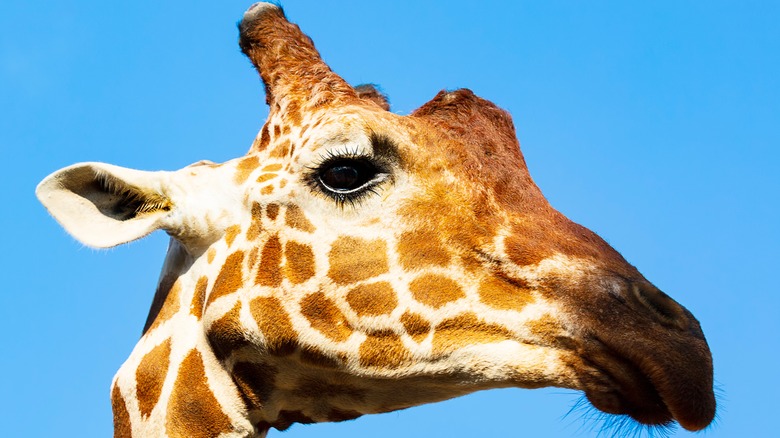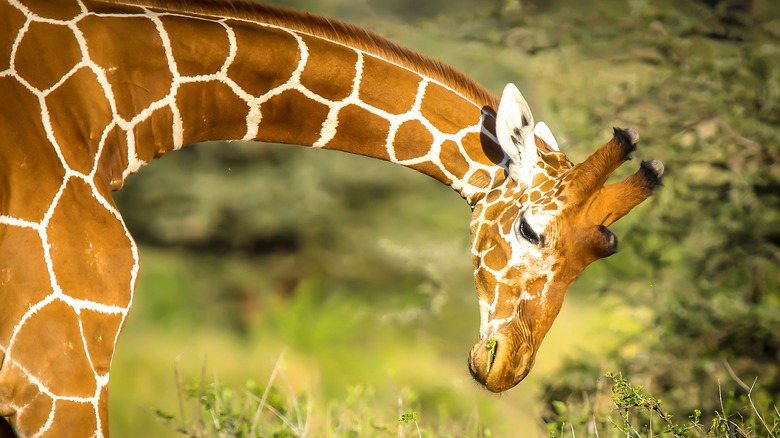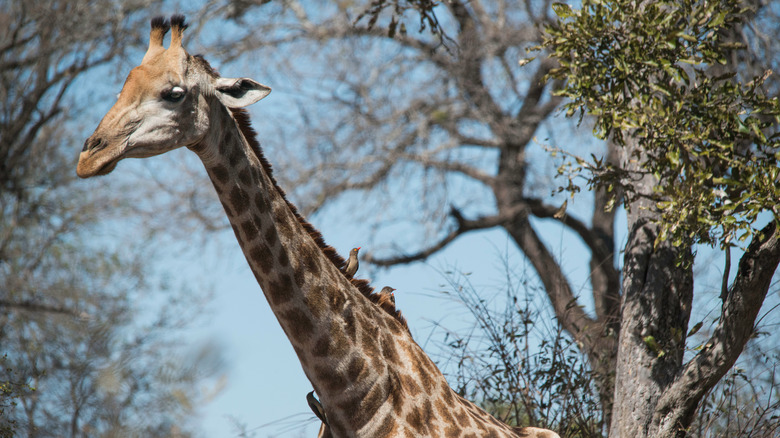Humans And Giraffes Have The Same Number Of Bones In This Part Of The Body
We human beings are privileged to exist alongside some truly fascinating creatures. We must look so odd next to some of them. Without the (comparatively) mighty exoskeleton of some insects, the glorious plumes of animals like cockerels or the cunning natural camouflage of the chameleon (not to mention an endless number of other remarkable species' talents besides), our squishy human bodies may seem rather strange.
According to Britannica, Homo sapiens is estimated to date back to Africa over 315,000 years ago. We haven't been idle in that time, granted. We've developed tools, formed societies all over the world, and invented glorious things like cars, Pokémon, Skittles, and Sir Elton John.
As advanced as we may like to think we are, as different as we may believe ourselves to be from other extraordinary species, we have some surprising things in common with them. The magnificent giraffe, for instance, has the same number of bones as we do in one of its most characteristic features.
Giraffes, humans and most other mammals have seven neck bones
Giraffes — truly iconic animals — have many distinguishing features. Their unusually patterned coats, for one. Then there are their extraordinary tongues which, National Geographic reports, are around 21 inches long.The most notable characteristic of a giraffe, of course, is its great height.
National Geographic goes on to state that giraffes are the world's tallest land animals, and can reach up to 19 feet in height. Around six feet of that is reportedly their legs, which means that they have a heck of a lot of neck, too.
More specifically, per World Atlas, a taller male giraffe's neck can be up to seven feet long. It's a curious fact that seven is also the number of vertebrae in that majestic neck. This is certainly a common number. Britannica states that almost all known mammals have seven neck bones, or cervical vertebrae. One of very few exceptions is the sloth, which takes its sweet time, has its own rules of the skeletal system as it does with punctuality, and has either six or nine of these bones. Humans and giraffes, then, both have seven bones in their necks.
The clever biology of a giraffe's neck
As Science Focus reports, those long necks serve giraffes more than one purpose. Not only do they, famously, give access to food that would be inaccessible to other grazers, but male giraffes engage in fierce combat for mating rights by utilizing them in conjunction with their thick and powerful skulls.
While the number of bones is the same, a giraffe's neck is rather different from ours mechanically, so as to give it the range of motion it needs to perform its various roles. In "The Giraffe: Its Biology, Behavior, And Ecology," Anne Innis Dagg and J. Bristol Foster explain: "the neck ... has few joints, with each vertebra very long ... the first vertebra in the dorsal or thoracic series resembles a cervical vertebra. The cervicals articulate with each other by lateral pairs of anterior and posterior articular facets, while the thoracics typically have median pairs." These ball-and-socket joints, per How Stuff Works, enable giraffes to perform the tasks they need to with such an (in some ways) impractical yet glorious neck.
Our necks are so similar yet so different to a giraffe's. It's just another thing that keeps us connected to the rest of the animal kingdom.


